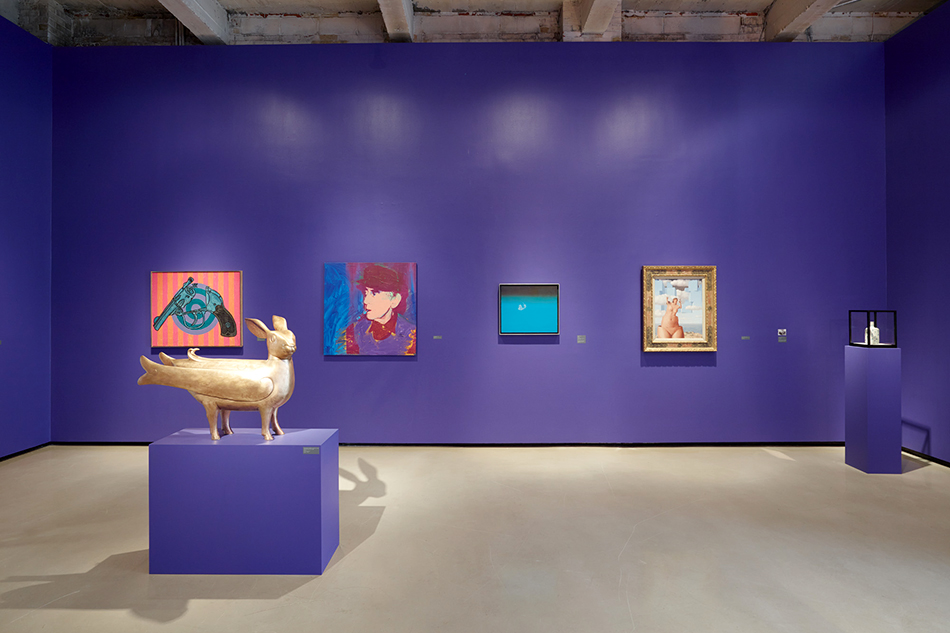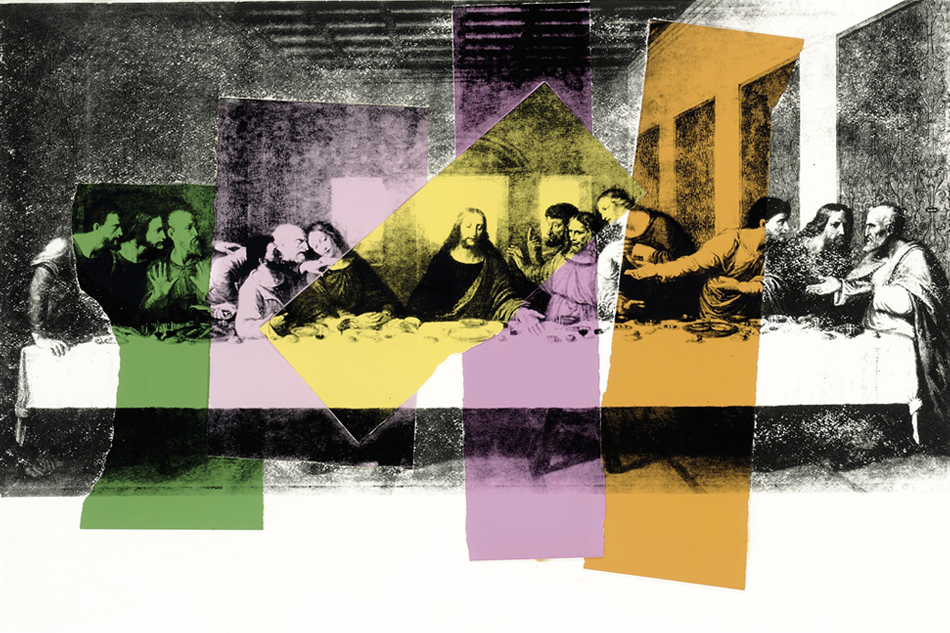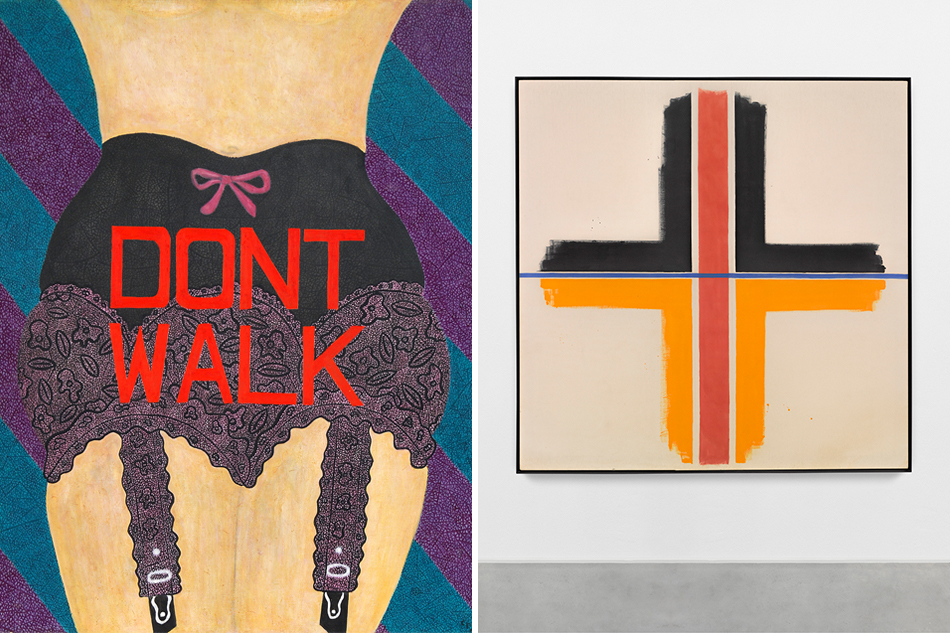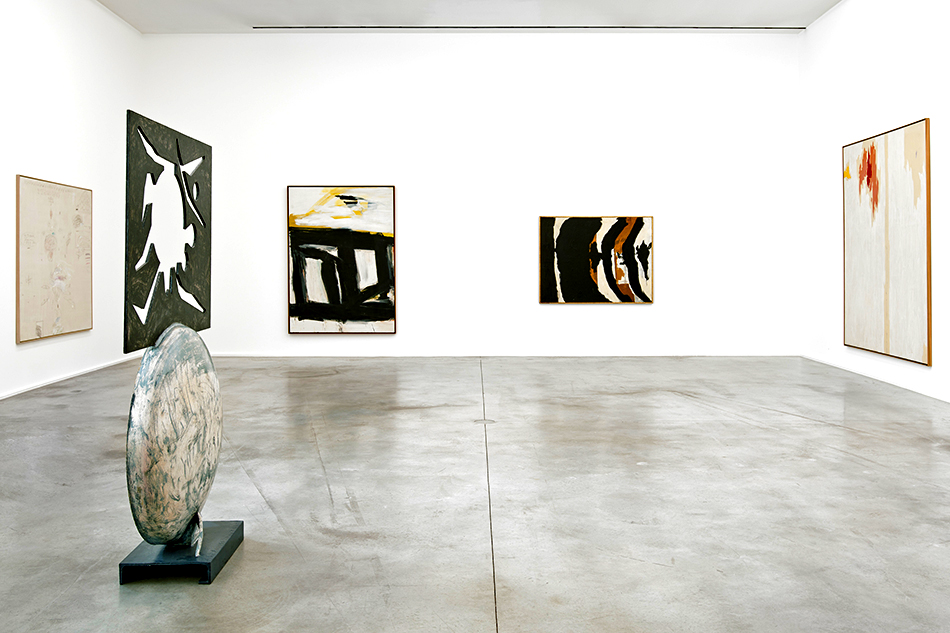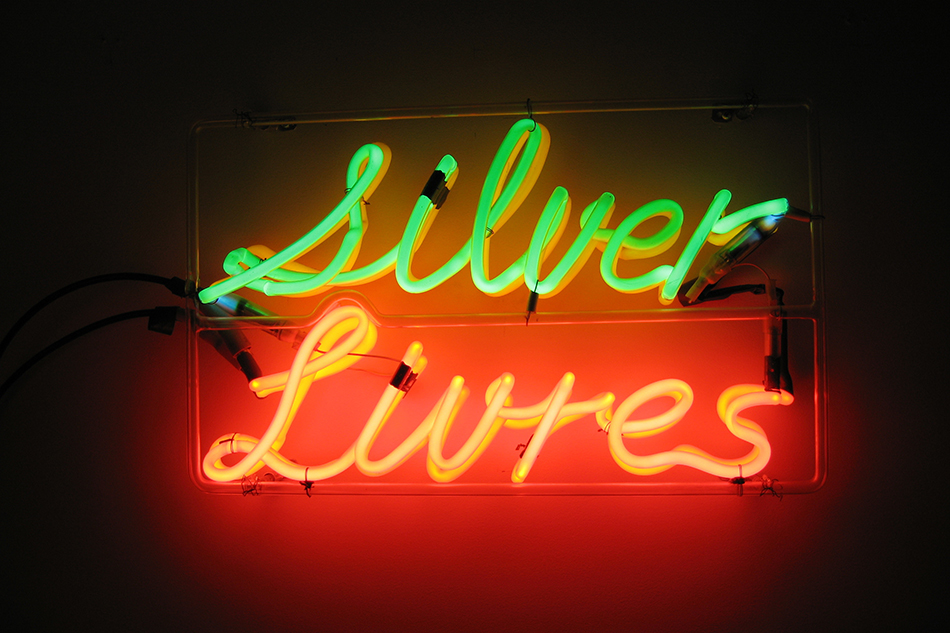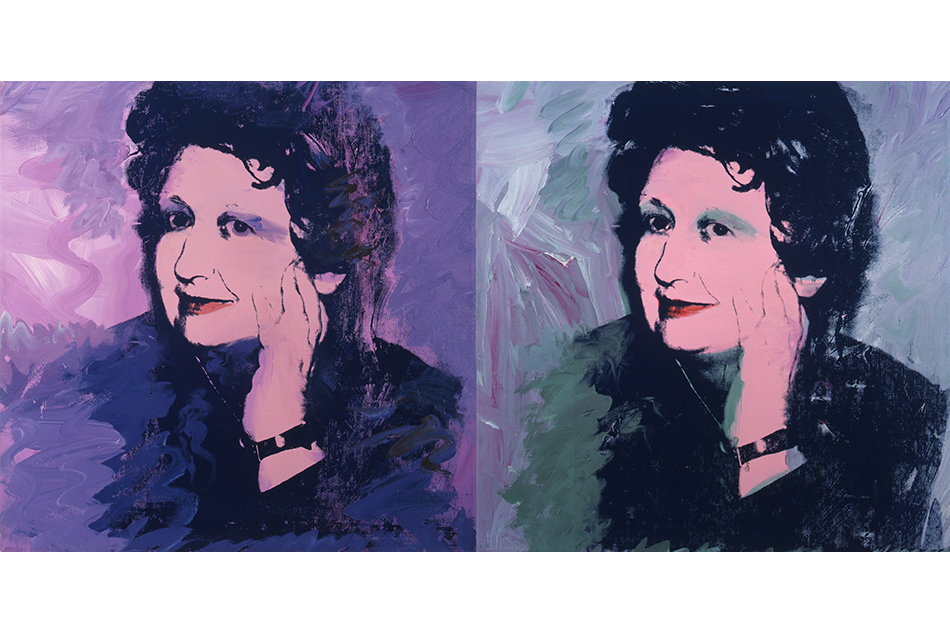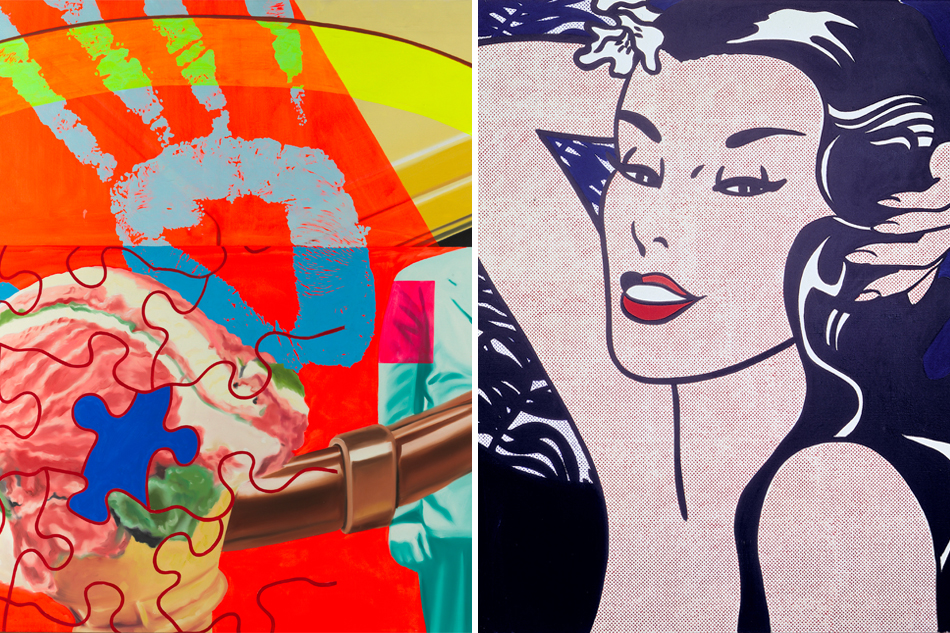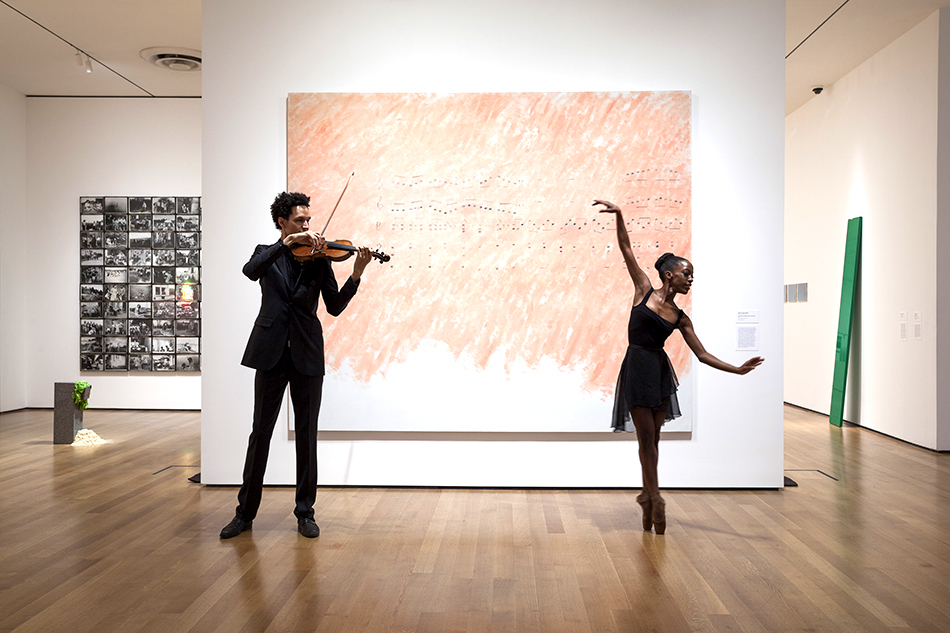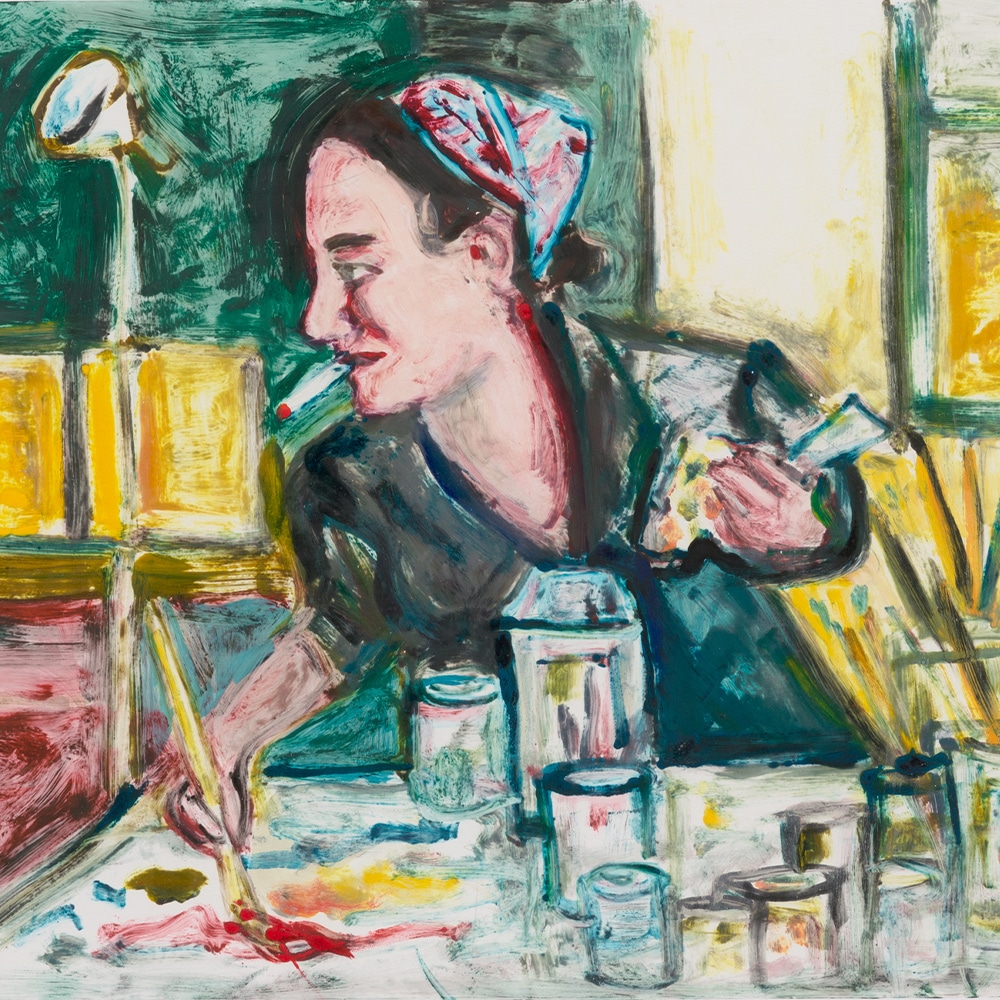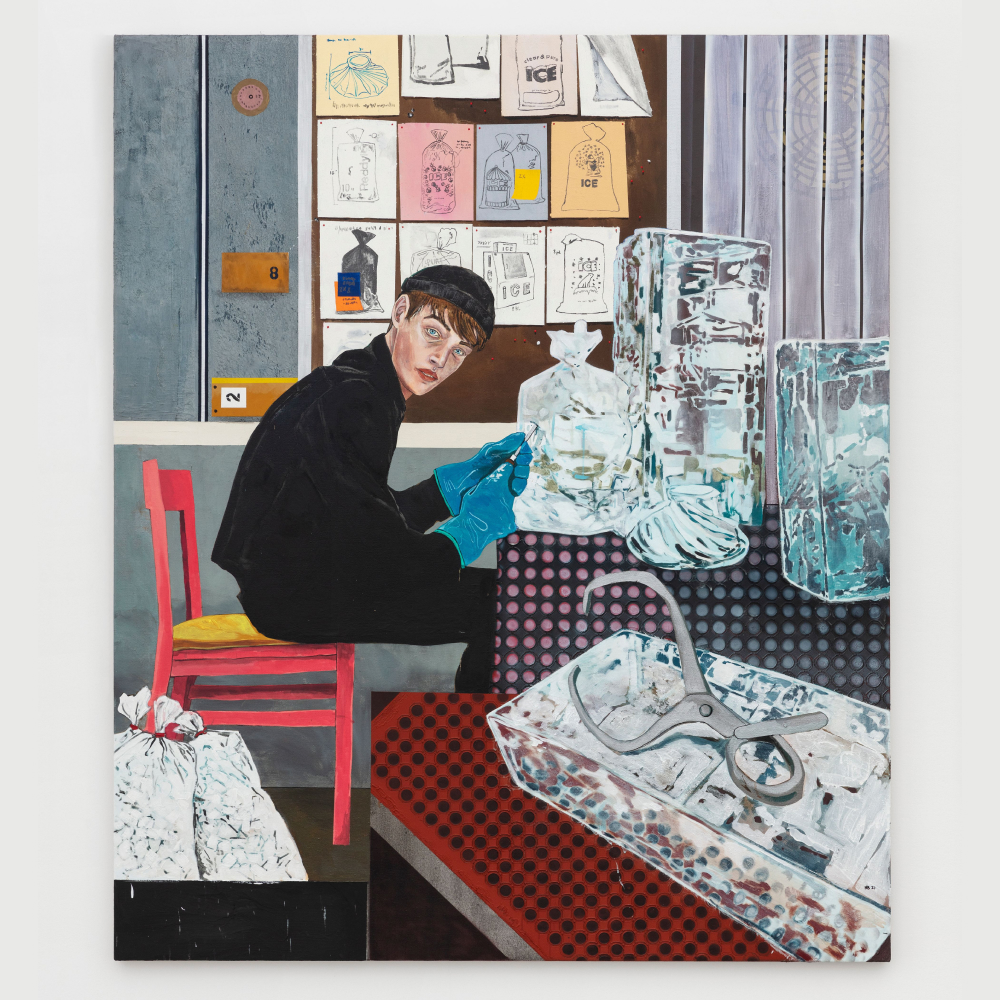
April 9, 2014At his galleries in Europe and New York, Iolas championed the work of many then-unheralded artists, including Magritte, whose The Pilgrim, 1966, is included in the Kasmin show. Image © 2014 C. Herscovici/ Artists Rights Society (ARS), New York; Top: Dealer and collector Iolas (right) plays around with artist René Magritte, 1965. Photo by Steve Schapiro © Corbis Images
As we all know, the first week of March — a.k.a. “Armory Arts Week” — brought a dizzying array of art fairs to New York City, not to mention the Whitney Biennial and hundreds of special openings and events. But one of the most breathtaking sights I encountered seemed miles away from that furor: it was the window into the past opened by “Alexander the Great: The Iolas Gallery 1955-1987,” at Chelsea’s Paul Kasmin Gallery (through April 26), where the walls were painted violet-blue for the occasion. In the first room alone, a glorious mirror edged with bronze hosta leaves by the fantastical sculptor Claude Lalanne was flanked by work from a phalanx of Surrealist and Pop icons: René Magritte, Giorgio de Chirico, Ed Ruscha and Max Ernst, as well as three Andy Warhol portraits, depicting Man Ray, Dominique de Menil and Alexander Iolas, the show’s honoree, himself. Elsewhere, visitors exclaimed over gems by 26 others, including Victor Brauner, Yves Klein, Dorothea Tanning, Jules Olitski and William N. Copley.
The exhibition is a tribute to Iolas, the Greek-born Balanchine-trained ballet dancer turned art dealer. An early pioneer of Surrealism in America, second only to Julien Levy, he died in 1987, but not before giving first shows to many of these artists at the galleries he directed or owned from about 1945 to 1975 in Paris, Geneva, Milan and New York. (Iolas also mounted Warhol’s last show in the Pop artist’s own lifetime: The 1987 exhibit at Milan’s Palazzo Stelline revealed paintings and drawings based on Leonardo da Vinci’s Last Supper.) Amid the hubbub of the fairs, it was an inspiring reminder of a dealer’s power to shape art history — not so much by selling out a booth six times, but by having the guts to champion the un-tried, anti-commercial and new.

Robert Rauschenberg’s mixed-media piece Pilgrim, 1960, is part of the current “Re-view: Onnasch Collection” at Hauser & Wirth. Image © Robert Rauschenberg Foundation/Licensed by VAGA, New York, NY, courtesy Onnasch Collection
“It’s a little bit peculiar doing exhibitions about other dealers in your gallery,” Paul Kasmin says. “But a lot of the great artists Iolas looked after were hardly wanted in those days. The man did something great for Surrealism in America, and he was also a huge influence on the next generation of art dealers and collectors,” like Anthony d’Offay and Dinos Karpidas. (Kasmin knows something about legacy: His own father, John Kasmin, was the London “It” dealer who discovered David Hockney in the Swinging Sixties.)
Certainly, shows about great dealers of the past seem to be the trend du jour in New York. Right now, at Hauser & Wirth in Chelsea, one can see selections from the massive collection of the German dealer Reinhard Onnasch, who promoted Barnett Newman, Clyfford Still, Ed Kienholz, Dieter Roth and many more in the 1960s and ’70s in Berlin and New York. (Called “Re-view: Onnasch Collection,” the show is up through April 12).
The Museum of Modern Art, meanwhile, is offering “Ileana Sonnabend: Ambassador for the New” (through April 21), studded with works by Robert Rauschenberg, Jasper Johns, John Baldessari and about 30 others; all were once owned or exhibited by Sonnabend, the great Romanian-born dealer whose galleries in New York and Paris served as proving grounds for Pop, Minimalism, Arte Povera and beyond.
And the year kicked off with “Hooray for Hollywood,” a tribute to Holly Solomon, the Factory habitué and Pop icon, who, in the late 1970s, became known for showing Pattern & Decoration artists like Robert Kushner and Thomas Lanigan-Schmidt. (“Hooray,” which filled two Chelsea galleries, Pavel Zoubok and Mixed Greens, closed in Feburary.)

Hauser & Wirth in New York’s Chelsea devoted its current show (on view through April 12) to the German dealer Reinhard Onnasch, whose galleries in New York and Berlin represented many of the avant-garde artists of the 1960s and ’70s. Onnasch is pictured here during his 1971 exhibition “20 Deutsche.” Photo by Hermann Kiessling
So why are people suddenly so interested in these bygone gallery scenes? Paul Schimmel, the Hauser & Wirth partner who organized the Onnasch show, a version of which debuted at the gallery’s three London branches last fall, observes that art dealers have been part of the story of art throughout the modern era. “It really is art history,” he says. “When you think of Picasso, you think of Kahnweiler. When you think of the Impressionists, you think of Durand-Ruel. The rise of the gallerist has paralleled the rise of the modern age of art.” And, just as our tastes in art have grown “more global and diverse,” Schimmel adds, we’ve become more curious about dealers who, like Onnasch or Iolas, stand a little outside the canon.
Schimmel also points out that the shows are coming about because of “a series of opportunities,” as one generation passes away and another confronts legacy issues. To wit, of all the dealers memorialized, only Onnasch, 72, is still alive.
But in a time when the art world is so market-driven, there’s also plenty of nostalgia for the way things used to be — for the days when outré artists and the dealers who loved them were essentially “throwing their lives away,” as artist Billy Copley, the son of William N. Copley and co-manager of his estate, told me at the lavish Iolas after-party.
Think of what defines a great dealer today, and you’re likely to think of someone like Larry Gagosian, who maintains 15 branches in seven countries (plus a Madison Avenue boutique, which sells books, editions and Leica cameras), or someone with a kunsthalle-size space, designed by a famous architect. Yet, when we think back to great dealers of the past, we remember them not for the spaces they showed in but the artists they supported, often against strong odds.

Sonnabend at her desk in her Paris gallery, ca. 1965 (courtesy Sonnabend Gallery, New York).
When Sonnabend showed American Pop Art in Paris in the early 1960s, she was disparaged by a journalist from Paris Match (who, one would hope, ate his words when the show — not to mention the entire movement — proved popular with the public). In New York, she was renowned for showing work that couldn’t be sold, like Gilbert & George’s “Singing Sculpture” performance, which opened her SoHo gallery in 1971, or Vito Acconci’s “Seedbed,” the 1972 endurance piece in which the artist masturbated for hours each day, hidden beneath a ramp.
As for Onnasch, he opened his New York space in 1973, during a punishing recession; yet his first show, which made only one sale, introduced Gerhard Richter to the U.S. (Schimmel points out in the catalog that trying to sell artwork in a bad market also helped Onnasch build his own great private collection.)
Of course, there’s another reason to focus shows around dealers: they offer juicy narratives. Ann Temkin, the chief curator of painting and sculpture at MoMA, believes that’s why their Sonnabend show, which she curated, has been so popular with the public, attracting a broad spectrum of visitors. “We were surprised that this exhibition has had so much resonance,” she says. “I think that’s because it’s a fantastic story of a woman who really was a maverick.” Temkin adds that visitors are inspired by the idea that a woman had the chutzpah to “transform a certain situation, just out of sheer desire and ambition,” even as artists whose careers Sonnabend built, like Jim Dine, left for more prominent galleries. “It teaches us at the museum that visitors respond to an interesting story,” Temkin adds. “No matter the artists’ names.”

